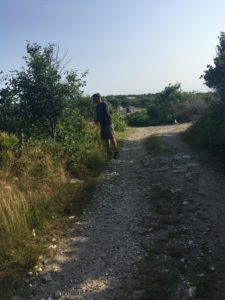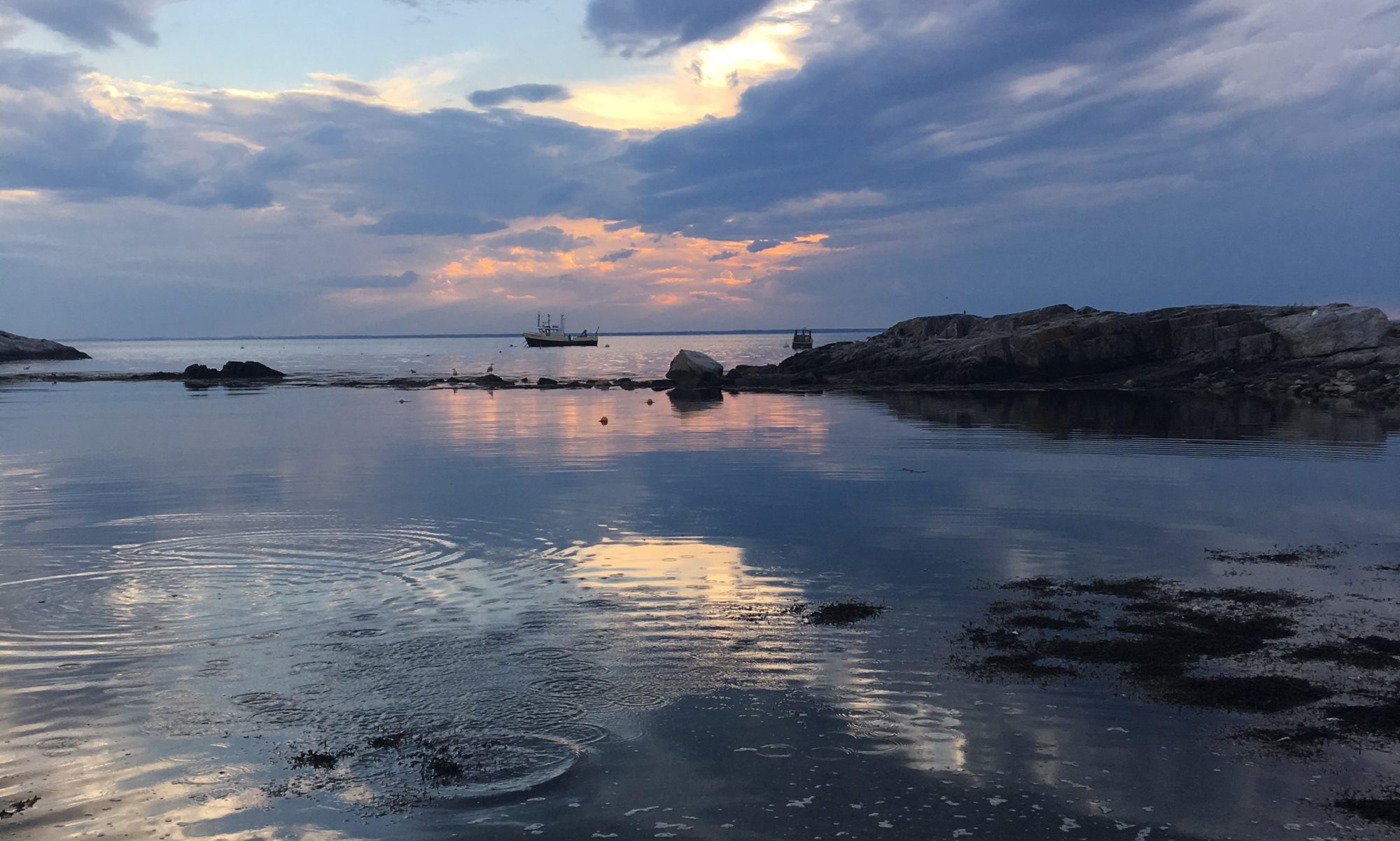July 10, 2018: Day One of Our Maine Trip
The first day of our 7-day Lab trip to Maine sent us to the marine biological facility called Shoals Marine Lab, located on Appledore Island. The Island is six miles off the coast of the mainland and is the largest of 9 islands which make up the Isle of Shoals. The entire Holy Cross Marine Organismal Biology Lab (MOB) was present for this beginning part of the journey, requiring us to take separate cars on the way to the 9:15am boat which would take us to the island. Katie drove Safa and I while we followed Professor McAlister and his son Colin in their own car on way there. The drive up was filled with random conversation, some beachy tunes, and waves from Colin from Professor McAlister’s car. The boat ride to the island was the perfect way to fully wake up. Nothing is as refreshing as salty, sea air blowing in your face.
When we got to the Island, we were greeted by some of Shoal’s faculty and staff that Safa and Prof. McAlister knew from their past stays on the Island. We spent the morning traversing the island’s rocky coast. Along the walk, Prof. McAlister pointed out landmarks on the neighboring Isles of Shoals. He peppered the walk with interesting tidbits about the island’s history and told us about such thing as a fire that wiped out both a historic hotel and Cecelia Thaxter’s gardens, the foundations of which are still around. We bonded as a lab while finding sea glass, skipping rocks, and munching on June berries from wild plants on the side of the path. Prof. McAlister was especially fond of the June berries.


Figure 1: A rocky beach on Appledore Island Figure 2: Prof. McAlister picking June berries along the path
In our free time after lunch, we spent some time exploring the Island, learning about research that was ongoing at shoals, and chatting with other Holy Cross students that were on the island. After dinner, Prof. McAlister gave a ‘Rock Talk’ — a lecture given by visiting researchers on Appledore Island. His talk detailed his past and ongoing research with slides explaining the research of the students in his lab; Safa, Katie, and I. The slides of his students’ research had pictures of us in the lab… and the shirt I was wearing in lab the day he took pictures was the shirt I happened to be wearing that night. That detail did not go unnoticed by the members of the room as all eyes turned to us when we were mentioned. It was embarrassing. However, it was very cool to have our research projects explained to a scientific audience that found it equally as interesting as we do!
That night after the talk we were invited to the Island Director’s house for a reception which featured chocolate cake and interesting conversation with some visiting professors. The rest of the night was spent trying to fall asleep to the sound of many, many, very loud seagulls (Fun fact: Appledore Island is a Seagull Colony site 😊).
Our day spent on Appledore Island was a great way to start off a week of marine science! Keep an eye out for our next post which will detail part of our trip and stay at Bowdoin College and our time at their Marine Research Facility!
Over and out,
Sydney and Katie

Figure 3: A picture of the Holy Cross Marine Organismal Biology Lab group (featuring our youngest, guest member) on a boat, leaving Appledore Island.
